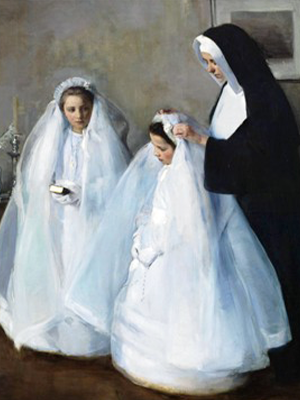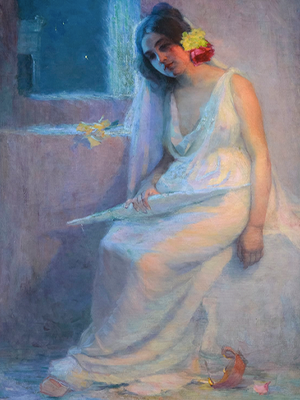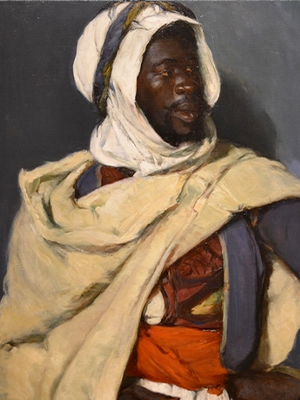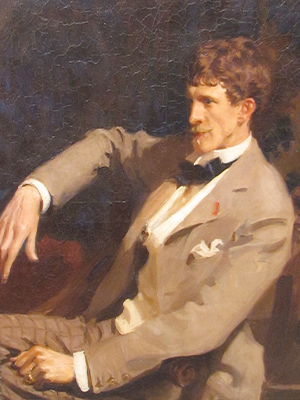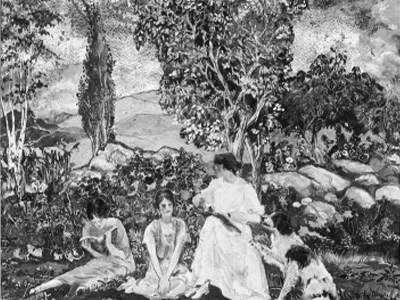AWAA Nineteenth-Century Exhibitions
1893
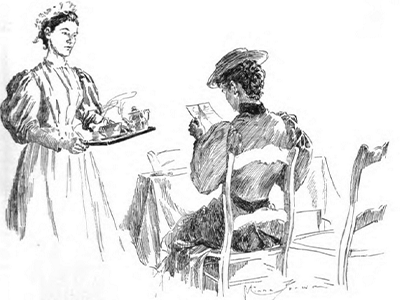

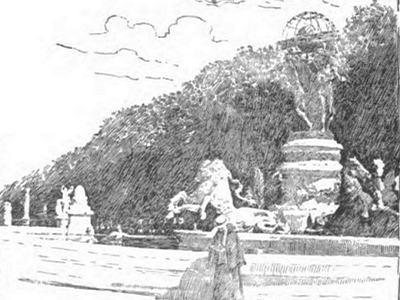
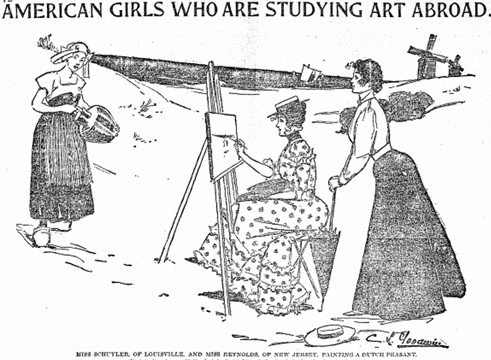
The inaugural 10-day show at 4 rue de Chevreuse, the second exhibition ever mounted by the AWAA, opened on December 13, 1893. It was reviewed by Club resident and artist Elizabeth Taylor: "The evening of the opening reception the guests, in passing through the rambling corridors, had an opportunity of seeing many of the students' rooms" (489). The Club was still a new entity in Paris and one imagines that there was great curiosity among the reception's attendees about the living quarters of the young women artists.
In a November 1894 Scribner’s article about the Girls' Art Club, Emily Meredyth Aylward also recalled the excitement surrounding its first major show:
Of all the great holidays in the year by far the greatest and most significant is Exhibition Day. Thus far there has only been time for one, which was held early last December. All the students' work for the year is hung in the exhibition gallery, a spacious, finely lit room with polished floor, and divans here and there for visitors, for all artistic Paris, male and female, is invited, and last year appeared in goodly showing. To Exhibition Day the girls look forward all year with intense eagerness, the informal criticisms made en passant by some of the most prominent French artists being followed and listened for as suggestions of priceless value. In the evening there is a reception, supper, and dance to a good Italian string band. Last year the decorations were wonderfully chic and unique, the principal being a frieze painted on common brown paper by some young male students in all sorts of American edible designs. Turkeys and cranberries, oysters on the half-shell, fish fresh caught in the nets, bunches of sweet - corn, groups of tomatoes, were all thrown on in impressionistic style with such capital effect that artists present were all loud in praise. The frieze, intended only for the evening, has since been taken and nailed up permanently in the dining-room. The exhibition-room,which is on the same floor with the reception and other public rooms, is admirably adapted for dancing, and serves the purpose on any fete when male friends are allowed to be invited (604-605).
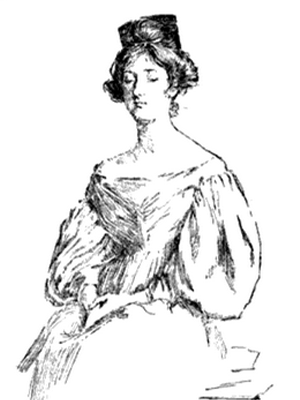
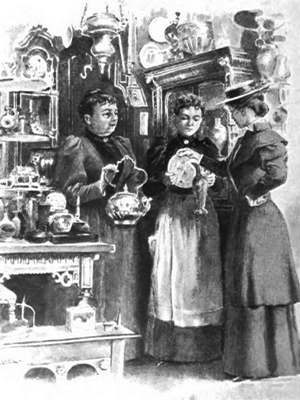
Details about who exhibited at the first show are limited. A brief mention published in The New York Herald European edition on December 14, 1893 simply describes "some very fine and clever work" (3). Tea was served in the Club’s restaurant at the exhibition opening, presided over by Mrs. W.W. Newell and Mrs. John Lamson.
A French art periodical, L’Oeuvre d’art, covered the exhibition in its December 25, 1893 issue. The article, signed with the initials “G.C.,” praised the general efforts of the American women artists, highlighting their “originality of color [that is] not without good taste” (translated from French, 213).
1894
Fragments about the 1894 AWAA exhibition, held at the Girls’ Art Club from December 11 to December 21, 1894, have been recently uncovered. Pratt Institute Monthly reported that Mary S. Greene [Mary Shepard Greene] had been given "the place of honor" at this exhibition (83). Interestingly, Greene was not among the artists praised by the reviewer for The New York Herald European edition, who covered the show on December 14, 1894. The named artists were:
- Katharine [Gilbert] Abbott showed a portrait previously exhibited at the Salon des artistes français
- Josephine M. Lewis showed a study
- Elizabeth Nourse exhibited a Breton interior and "La Toilette du Matin"
- E. Taylor [Elizabeth] displayed several Norwegian sketches
- Aline S. Szold showed a painting, "Sunset"
- S.J. [Sarah Jesse] West exhibited "memory sketches in monotint." The reviewer described her as a contributor to Life magazine whose "caricaturing is not without merit."
The review concluded by noting that there were "other attractive items of the exhibition" (3).
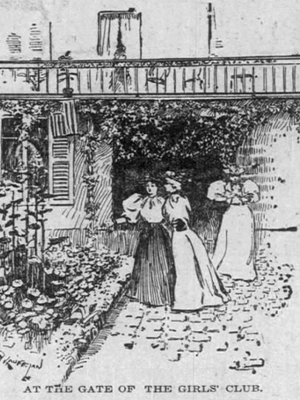
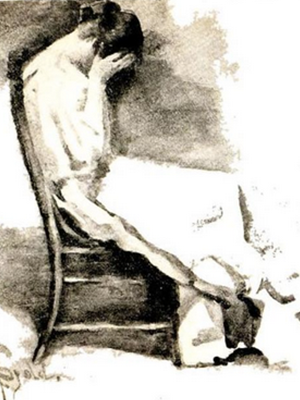
Buried in a January 13, 1895 Chicago Daily Tribune article about Whistler's criticism at the Académie Vitti is another short excerpt on the 1894 AWAA exhibition. The author, known only by the initials E.F.P., described the walls of the salle as being "lined with fine specimens in oil, drawings, crayons" (27). Unsurprisingly, the highest praise is reserved for Elizabeth Nourse, who showed several works, most notably "La Toilette du Matin." Another artist, Aline Szold, had pictures that were "much admired," but her career was tragically cut short when she died of typhoid malaria a few months after this exhibition. Pencil sketches by Alice Righter, Marie Gurnee, S.J. West [Sarah Jesse West], and "other Chicago girls" were praised, as was "a little gem" by Alice Randall depicting the interior of a chapel at Crécy-en-Brie. The article reported that many of the exhibited works were sold but Randall could not part with hers as she considered it irreplaceable. She later exhibited that same chapel interior in the 1895 Salon des artistes français.
According to Caro Lloyd, a charming tradition emerged from the annual exhibition around this time: one lucky artist had her picture purchased by the Club for display in its reading room until the next year's show, when a new work would be acquired and featured for the coming year (61). Sadly, most of this art has disappeared from 4 rue de Chevreuse.
1895
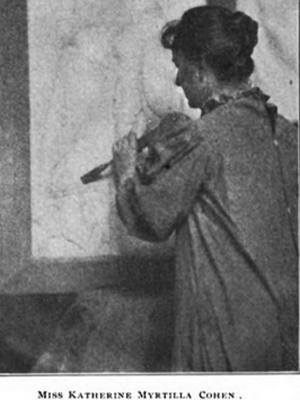
There were at least two exhibitions at the Girls' Art Club in 1895: an exhibition of sketches open from February 21 to March 7, and the large "fourth annual exhibition" of the AWAA, open from December 6 to December 20. The sketch show was featured in The New York Herald European edition on February 20, 1895, when artists Elizabeth Nourse and Maude Stunn [misspelling of Stumm] were singled out, as well as on March 3, 1895, when a short list of exhibitors was named:
- [Katharine Gilbert] Abbott, "charming studies of children"
- [Harriet Frary] Bain, "sunny watercolors of Barbizon courtyards"
- [Alice] Engley, watercolors
- [Elizabeth] Fullick, “a poetic sunset"
- [Rebecca] Jones, "graceful portraits and sketches"
- [probably H. Joan] Osborne, "sunny, broad study of a boat on the sands"
- Pattens [Mary Caverly Patten], "rich studies of flowers"
- [Sarah Jesse] West, "interesting monotints"
- ?Wrekinson, for "a charming study, the 'First Communion'" (perhaps a study of the painting by Elizabeth Nourse)
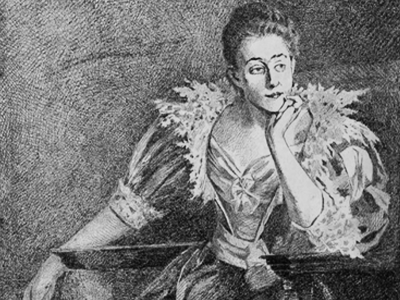
The reviewer acknowledges, "It would have been impossible to mention all the meritorious sketches," before providing a brief description of the American Girls' Art Club and its patroness, Elisabeth Mills Reid (5).
Another mention of the sketch exhibition appeared in The New York Herald European edition on February 27, 1895 (5):
- Elizabeth Nourse (watercolors), deemed best
- Maud Stone [another misspelling of Maud Stumm], color sketches, deemed best
- Miss Jones[ Rebecca Jones]
- Miss Taylor [Elizabeth Taylor]
- Miss Szold” [Aline Szold]
- Miss Patten[probably Mary Caverly Patten]
- Miss Menzler [Bertha Menzler]
- Miss Abbott [Katharine Gilbert Abbott]
A lengthy review of the annual AWAA exhibition appeared in The New York Herald European edition on December 7, 1895 (4). The jury for the 80-work show was impressive: artists Alexander Harrison, Albert Herter, Elizabeth Nourse, and Edward Ertz. The reviewer considered this exhibition to be superior to the annual show of 1894, declaring that "the pictures are all worth a visit," but singling out a few artists for special recognition:
- Katherine Cohen’s sculpture, "The Western Maiden"
- M.S. [Mary Shepard] Green[e]’s painting called "The Green Book" and a panel of a "girl playing the pipes"
- A.L. [Anne Louise] Gregory’s portrait of a boy
- A.D. [Austa Densmore] Sturdevant’s "Le Petit Diable," a painting of a child dressed in red sitting in a garden
- Lucy Parkman Trowbridge’s two miniatures
- Enid Yandell’s four sculpture portraits
According to the Baltimore Sun (Dec. 25, 1895, p. 7), honors were given to Mrs. Albert Herter for her two pastels. Other exhibitors who received favorable mentions were:
- Sadie Waters
- Marion Sanderson
- Josephine Lewis (student of Mac Monnies)
- Lucy Trowbridge
- Florence Este
- Mary Green
- Anne Gregory
- Anna Osgood
- Ella Mc Pherson
- and, of course, Elizabeth Nourse.
Just a week after the exhibition opened, a small fire at 4 rue de Chevreuse forced the show to close for a day for cleanup (The New York Herald European edition, December 13, 1895, 3). How fortunate that the fire was small!
1896
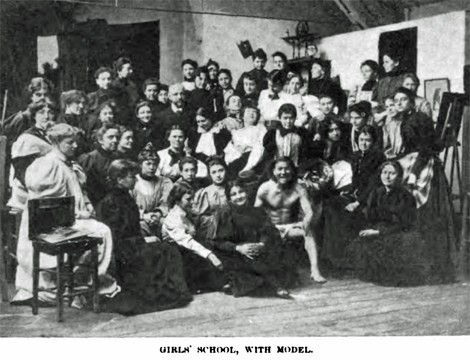
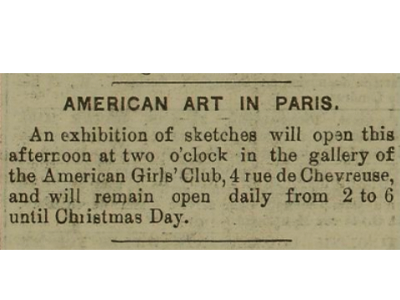
A small show sponsored by the AWAA opened at the Club on April 4, 1896 and closed two weeks later on April 18 (The New York Herald European edition, March 28, 1896, 5). The “interesting exhibition of sketches pastels and drawings” was favorably reviewed in the Herald on April 20, 1896: “The exhibits show a great deal of talent on the part of the young ladies, who hope to derive some financial benefit for the club from them, as most of the works exhibited are for sale” (3). A lengthy list of artists and their exhibited works reflects the high quality of the show:
- A.P. Osgood [Anna Parkman Osgood], “Doorways in Old London” and “sunset on Rye river”
- Louise Bachman, “river scenes and drawings of heads”
- Marion Sanderson, an interior
- Elizabeth Nourse, “Cuisine in Assisi” and a scene in Etaples
- Raphaelli Johnson [misspelling of Raphaelle Johnson], “a rainy day and effects of fog”
- Phoebe D. Watts, “In Bosnia”
- Anne [Louise] Gregory, “a boy’s head”
- Abbey W. Hathaway, “drawing of an old hunter”
- Adele Fay, picture of a choir boy
- Elfrida Klamroth, “head of an old man”
- C.M. Hall [Caroline Minturn Hall], landscapes and “some excellent sunset effects in water-colors”
The large annual 1896 exhibition, open for most of the month of December, featured 74 paintings and nine sculptures. The work was evaluated by the same distinguished jury from 1895:
- Edward Ertz, American painter, etcher, and teacher
- T. Alexander Harrison, an American marine painter based in France
- Albert Herter, an American artist and textile manufacturer
- Elizabeth Nourse
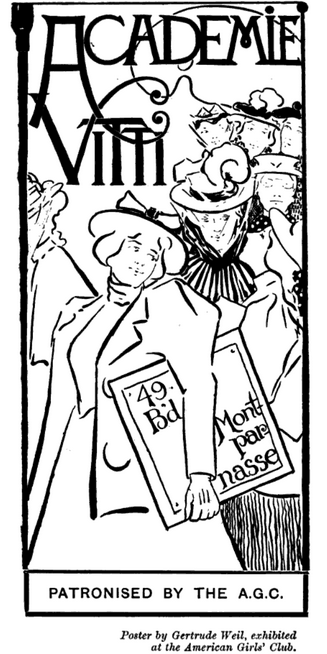
The 1896 annual AWAA exhibition was panned by a misogynist critic named Storrs Lee in volume 2 of the short-lived journal The Quartier Latin:
"By following the old advice, 'Seek and ye shall find,' the exhibit may be made worthy a visit. Also, don't seek, and you'll stumble against. For the best piece in the exhibit is the poster without the door that advertises the Académie Vitti. It is composed of several feminine figures, well drawn and placed, and suggest very much the intellectual American girl abroad. The artist is Miss Gertrude Weil, of Philadelphia. Placing it outside the exhibition hall reminds one of the old American shoe-store trick of putting a very fine pair of shoes in the window, marked 'cheap,' to get customers to enter" (21).
Tragically, poster artist Gertrude Weil, thought to have so much talent and promise, drowned in the Seine a few months after this exhibition. Her death sent shock waves through the artistic community in Paris and was widely reported as a suicide in the American press during the summer of 1897.
Storrs Lee did deign to compliment the work of a few artists:
- Mary Dunlap
- M.H. Halliday [Mary Hughitt Halliday]
- J. Hammond [Jane Nye Hammond], a well-modeled portrait bust
- W.H. Hawley, [Wilhelmina Hawley] "Girl in Grey," "Study of a Boy's Head," and a landscape
- Gertrude Page [most likely Gertrude Partington], a full-length portrait of a young lady
- Mary Nest Richardson
- H. Strafer [Harriette Strafer]
- Elizabeth Taylor,"Whaling Station in North Iceland" and several landscapes and marines of Iceland and the Faroe Islands
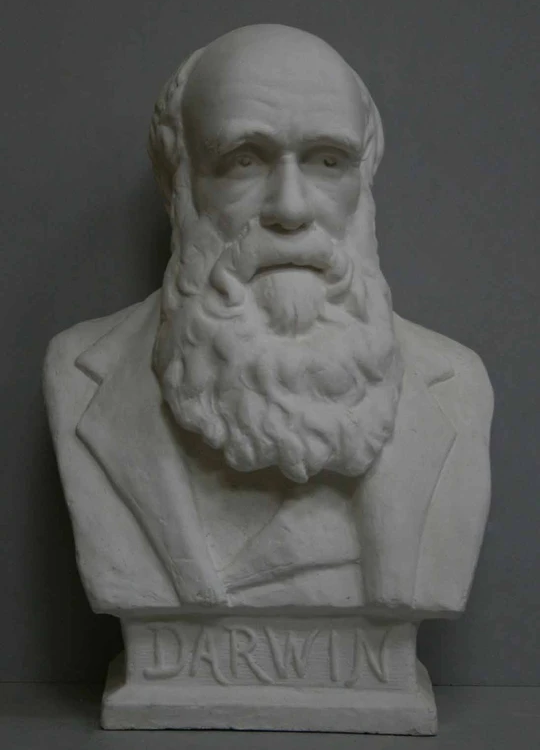
1897
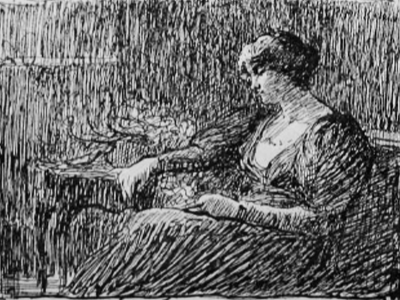
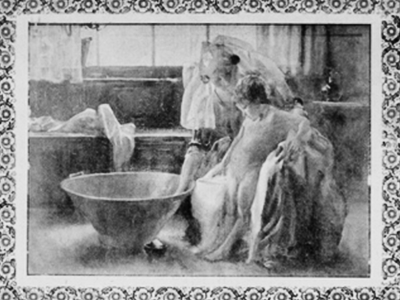
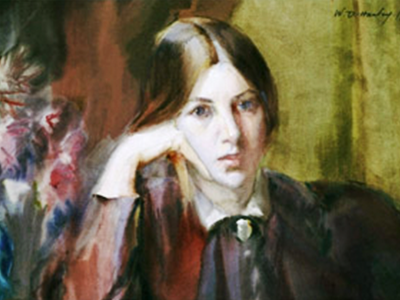
The annual AWAA exhibition, featuring 230 works of art by 77 artists, opened at the Club on December 12 and closed on December 24, 1897. Le Matin covered the show in its December 20 issue, listing Laura Bruce as that year's president of the American Woman's Art Association. The review was dismissive and rather critical:
What can one say of the 200 artworks exhibited rue de Chevreuse? Some modest, banal and without character, are shown alongside others that seem to be interesting endeavors [...] as for the objets d’art and sculptures, exhibited imperfectly, it's best not to mention them (3, translated from the French).
Despite the reviewer's overall displeasure, several artists were singled out for recognition:
- Jessie Allen (her paintings of Venice were highly praised)
- Laura Bruce
- A. Dickson [probably Mary Estelle Dickson]
- Alice Beek Engley (for her portraits), AWAA secretary and treasurer for 1897
- Mary Franklin
- Hawley [Wilhelmina Hawley]
- Elizabeth Nourse
- Miss Wellington Reynolds [Virginia Richmond Reynolds], miniatures
A brief mention of the show was also published on February 6, 1898 in the San Francisco Chronicle. It is not overflowing with praise for the overall quality of the art on display but highlights "two exquisite miniatures" by Mrs. Virginia Reynolds (7).
Ever the American Girls’ Art Club and AWAA chronicler, The New York Herald European edition published a notice about the exhibition’s opening day reception on December 15, 1897. Among the distinguished guests were U.S. Ambassador Horace Porter and his wife, as well as Consul-General John K. Gowdy and his family (3). On December 21, 1897, a letter to the editor signed by L.S.B. encouraged Americans in Paris to visit the show and purchase some of the works on display: “Most of the pictures are on sale, and no better encouragement could be given to these young earnest workers than the purchase of their pictures, and buyers would secure some very charming Christmas gifts” (4).
Another review, focused mostly on women artists originally from Chicago, appeared in the December 27, 1897 issue of The Chicago Chronicle. The reviewer gave an overview of the show before describing the works of several artists:
Water colors naturally predominate, as the work is mainly the result of vacation rambles and worked up for this occasion. There are some excellent small and medium sized oils. The many charming scenes and character sketches range all the way from Norwegian fjords and English landscapes to studies of the dusky Tunisian bedouin (12).
The reviewer also repeated a rumor heard at the exhibition's opening: that legendary actress Sarah Bernhardt would visit some time that week to view the art.
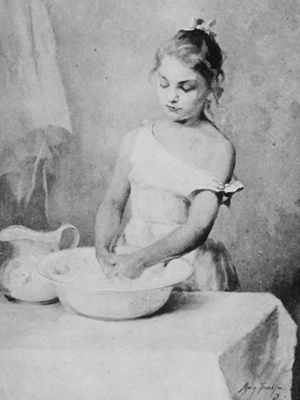
Willie Betty Newman's "The Foolish Virgin" was supposedly the "most ambitious picture" in the show and was attracting considerable attention--it had been purchased by the state of Ohio for $1,000, a large sum for this period.
As usual, Elizabeth Nourse's work was recognized as exceptional; of her several African sketches, "Head of an Arab" was deemed the best.
Laura Sutton Bruce showed three oils, all small character studies, and she was identified as someone who had "lived for so many years in the art atmosphere of Europe that she is a part of it." She was also praised for her skill in running the AWAA as that year's president.
A watercolor of an old man reading the newspaper by Alice Dow Engley was "one of the most charming and careful bits in the collection."
A study of the famed dancer "Cleo de Merode" by a certain Miss Greenough "is good and very decorative." It is possible that Miss Greenough is Charlotte Gore Greenough, daughter of the famed sculptor Horatio Greenough, who was living in Paris at the end of the 19th century and was known to publicly exhibit her work in France. A bust by her uncle, Richard Saltonstall Greenough, greets visitors in the vestibule of Reid Hall to this day.
Wilhelmina Hawley, identified as a student of "Calla Rossi" (a misspelling for Colarossi) from New York, showed "a number of good Dutch things and fancy sketches" while Mary Louise Arrington exhibited an exceptional Dutch interior. The reviewer commented that "one does grow fearfully weary of the omnipresent Dutch subjects."
The four Chicagoans were listed together: S.S. [Sarah Shewell] Hayden and Annie W. [Weaver] Jones both were in their second year studying in Paris and they each exhibited 6 watercolors of rural English scenes they had produced during summer travels. Grace Helliwell of Oak Park showed a Swedish marine sketch and the two miniatures by Virginia Reynolds were once again praised, this time as "the gems of the hanging." The reviewer concluded by praising the large studio in Impasse du Maine where Reynolds worked and taught classes, mostly to American women studying miniature painting.
1898
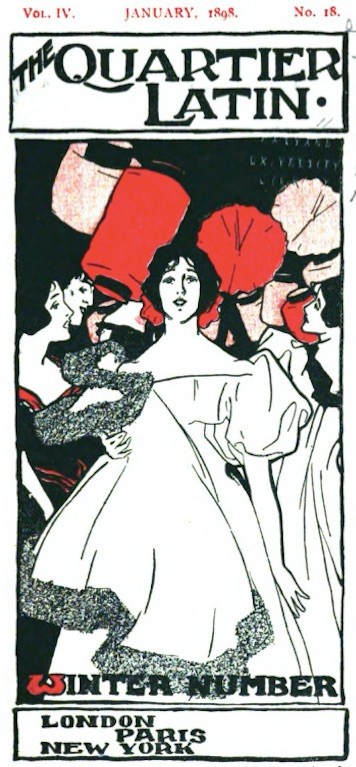
The Quartier Latin was a journal published from 1896 - 1899 by the male counterpart of the AWAA, the American Art Association of Paris (AAAP). Volume 4 of The Quartier Latin included detailed coverage of the AWAA's "Third Annual Sketch Exhibition," which opened on December 3 and closed on December 11, 1898. According to the reviewer, "the Association may congratulate themselves on having scored a distinct success." He also commented on the large crowds who turned out to view the exhibition: "Not only were the walls of the exhibition room generously covered with pictures, but the hat and cloak room downstairs was also crowded with works of art, which necessarily forced each visitor to be his own vestiaire. For this trifling inconvenience, however, he was more than compensated by the merit and excellence of the pictures that caused it" (651).
Of particular note is praise for a painting by Elizabeth Nourse, "Les Terrasses de Tunis," which is described as "conspicuous by reason of its absolute correctness in minutiae and architectural detail, combined with decorative charm and artistic feeling. Refreshing it is indeed, in these days of smudging, to behold so successful a relapse into old time methods- so frank and honest a use of art materials" (652).
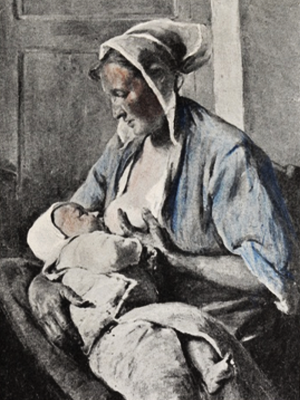
Other artists given favorable reviews were:
- Mrs. C. Briggs, black and white "Study of a Head"
- Marie Champney, miniature portrait
- Ellen Emmet, double-view portrait
- Alice Engley, watercolors
- Wilhelmina Hawley, seven watercolors
- Alice Mumford, portrait of a young girl
- E. Norcross [Eleanor Norcross], "Interior"
- Mrs. A. DeForest Parsons, studies of Dutch peasants
- Mrs. Virginia Reynolds, miniatures
A very brief notice about the third sketch exhibition also appeared in a local Lebanon, Pennsylvania newspaper, Evening Report, on December 30, 1898. Lebanon native, Katharine Adams Smith, who had been studying in Paris for a while and whose mother visited her in 1897, showed a number of works at this show. Smith exhibited five miniatures: "Diana sortant du bain," "La Melancholie," "Nice," and two studies. She also showed two copies of unidentified artists' works (4).
Shortly after the AWAA annual exhibition closed, a solo two-day show by painter Mary Stewart Dunlap opened at the Club.The New York Herald European edition included a brief advertisement for this exhibition on December 13, 1898 (5).
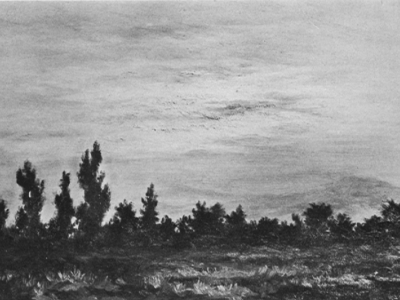
1899
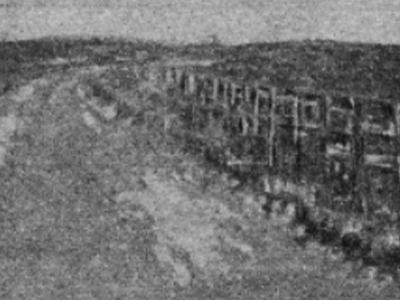
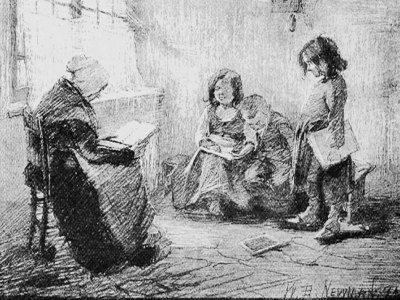
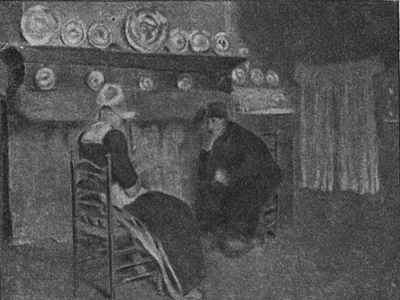
The judges of the annual AWAA exhibition, open from December 8-16, 1899, were:
- John White Alexander
- Edward Frederick Ertz
- Augustus Saint-Gaudens
- Alexander Harrison
Arsène Alexandre published a short review in Le Figaro, concluding that there was "beaucoup de talent" (5-6). He highlighted a few artists:
- E. Burton [Elizabeth Eaton Burton]
- E-M. Crawford [Esther Mabel Crawford]
- R. Deming [Mabel Reed Deming]
- Newman [Willie Betty Newman]
- Elizabeth Nourse
- Lee-Robbins [Lucy Lee-Robbins]
Katharine De Forest offered an extensive review of the 1899 exhibition for Harper's Bazaar on January 13, 1900. De Forest described the show as a "thoroughly delightful collection of pictures" and praised the AWAA's leadership: president Elizabeth Nourse, vice presidents Katherine Gilbert Abbott and Katharine Adams Smith, and secretary/treasurer Charlotte Van Buskirk (33).
She also provided an exhaustive list of exhibitors:
- Miss [Esther Mabel] Crawford of Kentucky showed 1 painting, "Un Petit Anglais"
- Miss [Mabel Reed] Deming, 1 painting, "A Dark Day"
- Miss Anna Dunlop, china frame
- Miss Grace Gassette, 1 still life, “a yellow blur of chrysanthemums against a background of Japanese blue”
- Miss Mary S. [Shepard] Greene of New York, 1 painting, "Waiting"
- Mrs. Caroline Houston, "Portrait of Mlle Y.C.," a miniature
- Mrs. [Mary Fairchild] MacMonnies, 1 painting
- Miss [Willie Betty] Newman, 2 paintings, "The Frugal Meal" and "Saying her Beads"
- Mrs. Antoinette de F. Parsons, 1 painting, "A Young Volendamer"
- Mrs. Lucy Lee-Robbins, 1 painting, study of a child in white pastels
- Miss Katharine Steele, china frame
- Miss Sheldon Stone [Edith Bristol Stone], of Philadelphia, "A Sketch," "A Study"
- Miss Elizabeth Strong, "Cochon d'Inde," "Le Guignol" (a work only 12 inches high which Mrs. Luckemeyer supposedly bought for the Club)
- Miss Susan Watkins, "Eugénie," "La Communiante" (which had an honorable mention at last year's Salon)
- Miss Enid Yandell, pewter tankard sculpture and portrait bust of Miss Baker, the "Massière" of Whistler's studio [should be Miss Bate, referring to Inez Bate]

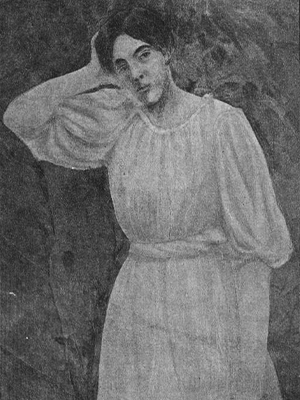
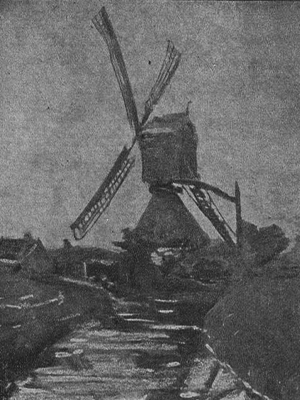
Blanche Dougan Cole also reviewed the annual 1899 show for The Collector and Art Critic, mentioning other artists whom Alexandre and De Forest had not named, as well as additional works by artists already praised in the other reviews (108-109).
- Elizabeth Eaton Burton, "a bit of the quaint book market on the quay"
- Mary Shepard Greene, "Summer," a study of a girl in pale yellow with foliage in the background
- Wilhelmina Hawley, "Old Mill,” declared by Cole "the best of the watercolors"
- Lavinia Kelly, a painting of a mother and child under trees
- Lucy Lee-Robbins, a portrait of a girl in a hat and "peculiarly intense blue gown" in addition to her study of a child in white
- Cornelia F. Maury, pastel sketches "The Late Breakfast" and "Mother and Child"
- Elizabeth Nourse, a "Holland Interior," featuring a girl and a man sitting before an old-fashioned fireplace, and a study called "The Sleepy Baby"
- Eleanor Norcross, a sketch of an interior
- Enid Yandell, "bas-relief Peri"
Cole concludes her review by declaring the "gem of the collection" to be a landscape, “A Dark Day” by Mabel Deming of San Francisco: "[..] its quiet but rich tones, the simplicity of composition and excellent color qualities suggest an early Constable, and would make it noticeable in any exhibition" (109).
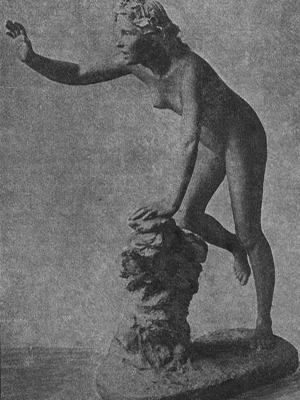
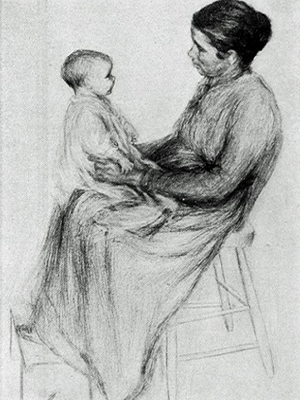
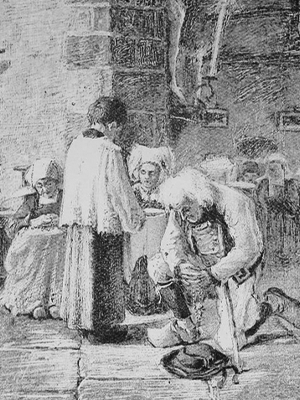
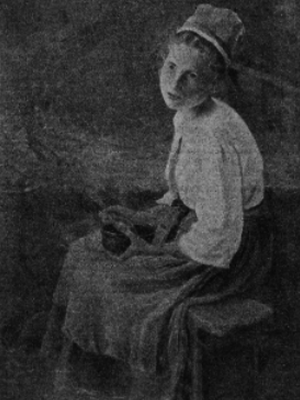
Not to be outdone by these other publications, The New York Herald European edition published a front-page review of the annual AWAA show on December 10, 1899. The unsigned review noted that over 100 works were on display (89 paintings, miniatures and watercolors; 9 pieces of sculpture; and some porcelain designs). Several artists and individual works were praised:
- Elizabeth Nourse, “Holland Interior” and “an amusing sketch, ‘The Sleepy Baby’”
- Katharine Adams Smith, “well-executed miniatures”- one of a woman sniffing a bunch of flowers, the second of a woman with a child in her arms, and the third showing an elderly priest
- Catherine Houston, two “charming” miniature portraits, of a girl and a cardinal
- Lucy Lee-Robbins, a study in white pastel
- Grace Gassette, still life of flowers in a vase
- Mary Fairchild MacMonnies, “Baigneuse”
- Willie Betty Newman, “The Frugal Meal” and “Moonlight”
- Cornelia Field Maury, pastels
- Elizabeth Kruseman Van Elten, “Portrait of My Mother”
- Wilhelmina Hawley, watercolors
- Martha Wheeler Baxter, “pretty” miniatures
A list of other exhibitors included: K.G. [Katherine Gilbert] Abbot, E. W. [Elizabeth Wheldon] Brain, [Lydia Amanda] Brewster, Emma Lampert Cooper, Blanche Dillaye, Deeming [should be Mabel Deming], Mary Gulliver, [Grace] Hackett, [Lucie] Hartrath, [Margaret] Hardon, [Marion] Holden, Ingraham [should be Elizabeth Ingham], [Rebecca] Jones, [Lavinia] Kelly, [Frances T. and/or Anna W. ] Lea, [Alice Randall] Marsh, [Eleanor] Norcross, [Antoinette de Forest] Parsons, Edith Stone, [Elizabeth] Strong, [Rosina Emmet] Sherwood, [Emily L.] Wyman, [Eleanor] Winslow, [Sarah J.] West, [Mary Minerva] Wetmore, [Catherine] Watkins, and [Alta] Wilmot (1).

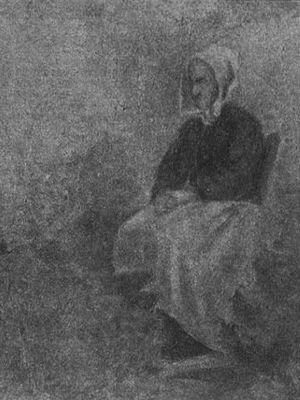
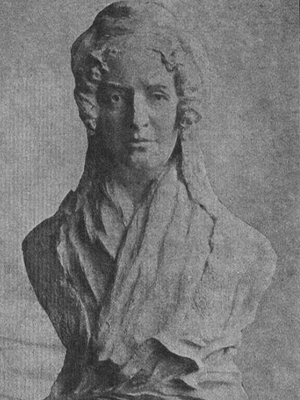
Then, on January 28, 1900, The New York Herald European edition ran a nearly two-page spread on the sixth annual exhibition, filled with images and detailed praise for the AWAA, the Girls’ Art Club, and the show. In addition to highlighting works by Mary Fairchild MacMonnies, Willie Betty Newman, Elizabeth Nourse, and Lucy Lee-Robbins, which other reviewers had also commended, this article dove deeper and gave a veritable laundry list of who exhibited, what they showed, and various biographical tidbits.
- A sculptor, identified only as Mrs. Herring [Mabel Conyers Herring] showed a “very artistic statue entitled ‘Echo’” as well as a portrait-statuette which had been accepted in the 1899 Salon des Beaux-Arts. The model for “Echo” was a certain Mlle. Marie D--. “who poses for a few sculptors in Paris” (9).
- Another sculptor, Enid Yandell of Louisville, Kentucky, exhibited her portrait bust of Emma Willard, an American pioneer in women’s education. The original marble bust of Willard had been made the previous summer and was then displayed in the New York State Library in Albany.
- K.G. [Katherine Gilbert] Abbott, one of the AWAA’s vice presidents for 1899, exhibited a portrait that was “not only an excellent likeness, but displays real talent” (10).
- Mrs. A.R. [Alice Randall] Marsh, from Chicago, showed several miniature portraits.
- K.A. [Katharine Adams] Smith of Lebanon, Pennsylvania exhibited a case of miniatures.
- Mrs. C. [Catherine] Houston earned “special honors” for her miniature portrait of Mlle. Y.C. Houston apparently claimed that too many American tourists in Paris asked French artists to produce miniatures for them and that “the object of the Association is to bring before the public from time to time meritorious work of American women” (10).
- M.S. [Mary Shepard] Greene exhibited the painting called “Waiting.”
- Blanche Dillaye showed a painting, “Boston Common in Winter.”
- E.M. [Esther Mabel Crawford] was praised for a “charming sketch” called “Un Petit Anglais” (10).
- M.W. [Martha Wheeler] Baxter, said to be a well-known miniaturist in Paris, showed a “Portrait of a Baby.”
- L. [Lydia Sewell] Brewster exhibited some Dutch landscapes.
- G. [Grace] Gassette showed a few pictures, but her painting of a bouquet of flowers received special mention from the jury.
- M. [Margaret] Hardon displayed an etching of Notre Dame and some sketches.
- E. [Elizabeth] Ingham, a painter from Philadelphia, was praised for two small works “illustrative of Paris life, the best of which is, perhaps, ‘Le Guignol’” (10).
- E. [Elizabeth] Strong, known as a painter of animals, “exhibited a very lifelike guinea pig” (10).
- J. [Janet] Scudder was praised for her sculpture but no works were named.
- W.D. [Wilhelmina Douglas] Hawley produced a number of admirable sketches, particularly “The Old Mill” (10).
- A painting on china by A.M. [Anna Mercer] Dunlop was singled out.
- E.W. [Elizabeth Wheldon] Brain, a designer at the famed Rookwood Pottery, showed two small pastels.
